| Home; Aviation; Cameras; Fiction; Health&Safety; Military; MS-Apps; Non-Fiction; Submarine; Technical; Trains; Watches; Transportation |
|---|
British Imperial Airways Handley Page H.P.42/45 Aircraft
Courtesy Wikipedia, the free encyclopedia.
Edited by David Barth 2 December 2013.
The first airline operations across the Channel were flown in Handley Page aircraft in 1919. A later Handley Page passenger aircraft was the H.P.42/45 bi-plane that flew passengers from 1930 to 1940. It had a wingspan of 130 feet, and was the mainstay of British Imperial Airways at the time. The H.P.42 carried 26 passengers in first class only, in three different compartments: the first class saloon, the bar and cocktail area, and the smoking section. More details are below the photos.
These airplanes were extremely safe (no passenger in an H.P.42/45 was ever killed in 10 years of international and domestic operations from 1930 until 1940), and very comfortable in seating, leg room, and service. Hot meals were served on bone china with silver cutlery, the liquor was free, and overnights were in the very best hotels.
There was no rush, no waiting in lines, and passengers were well-dressed. Flying at a few thousand feet, at 95 to 100 mph, one could see every interesting feature passing below.
It took four days to a week (depending on headwinds and weather) to fly from London to Cape Town, South Africa. The planes flew about four hours a day, staying at the best hotels in Europe, Cairo, Khartoum, and the Victoria Falls.
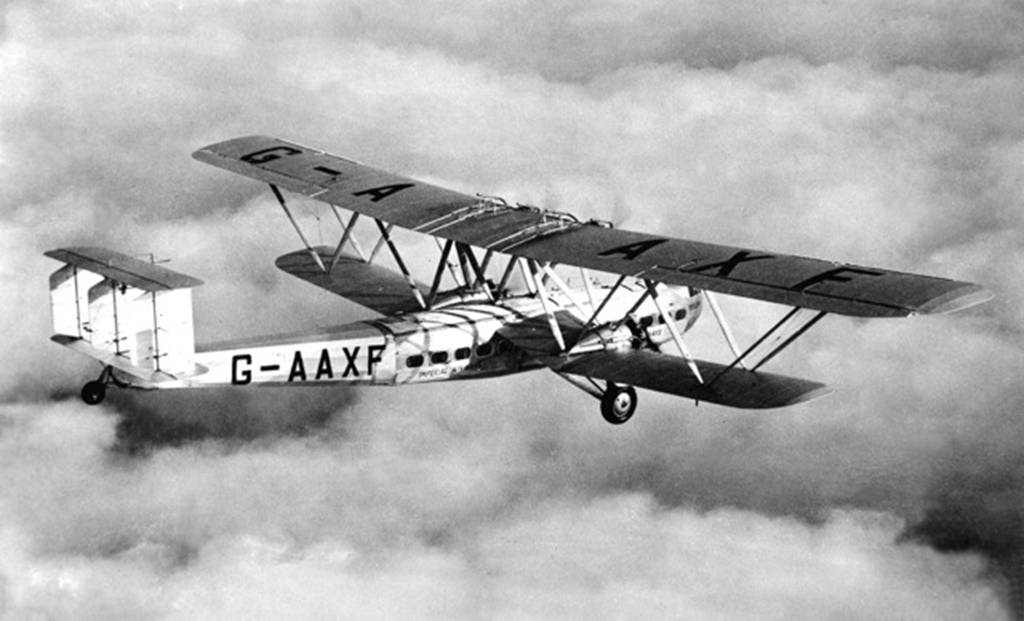 |
| Handley Page H.P.45 G-AAXF "Helena" of Imperial Airways in 1932. The planes were slow, safe and very comfortable. |
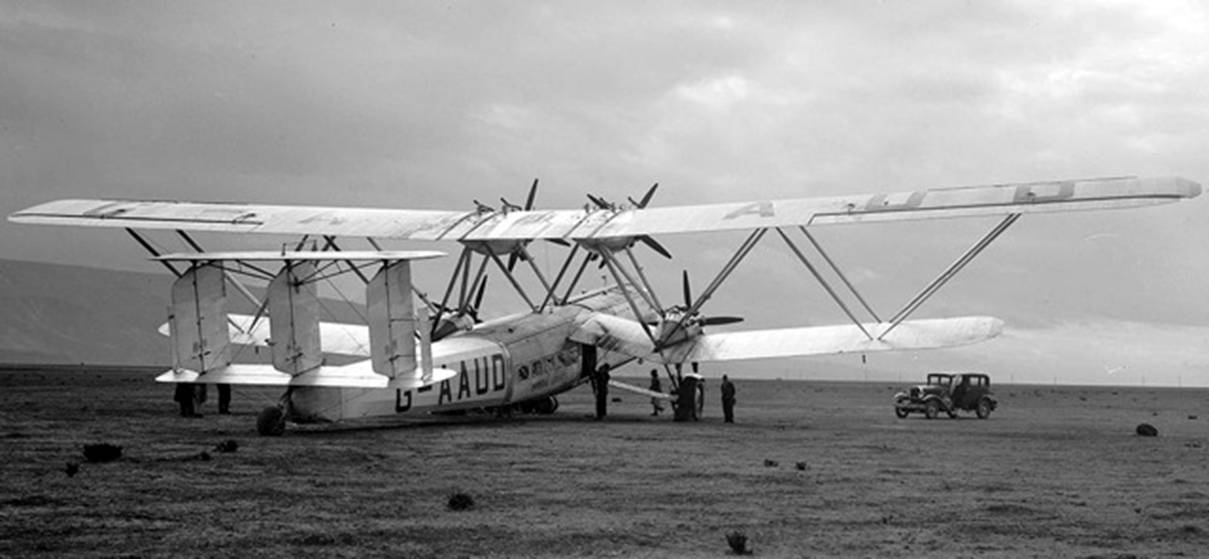 |
| H.P.42 G-AAUD "Hanno" at Samakh, Lake Tiberias in Palestine, 1931. |
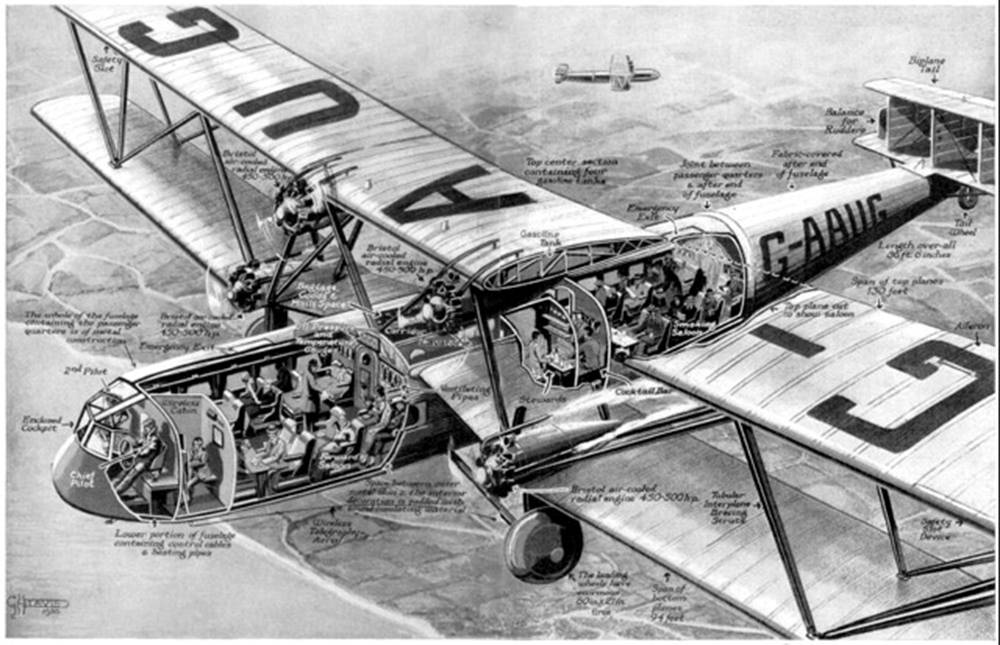 |
| A 1930 flying magazine's view of the new H.P.42/45 airliner. |
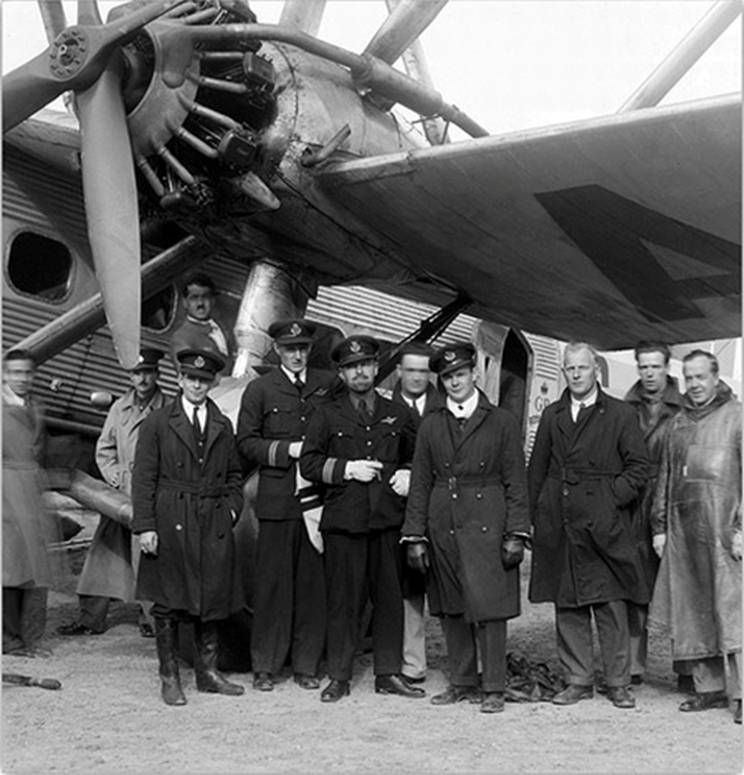 |
| Handley Page H.P.42/45 of Imperial Airways. |
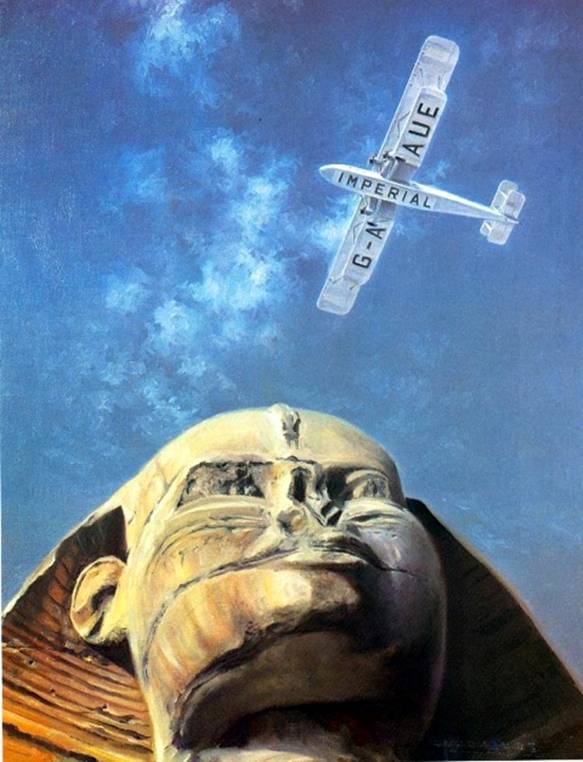 |
| Imperial Airways advertisement of the day showing H.P.42 G-AAUE "Hadrian". |
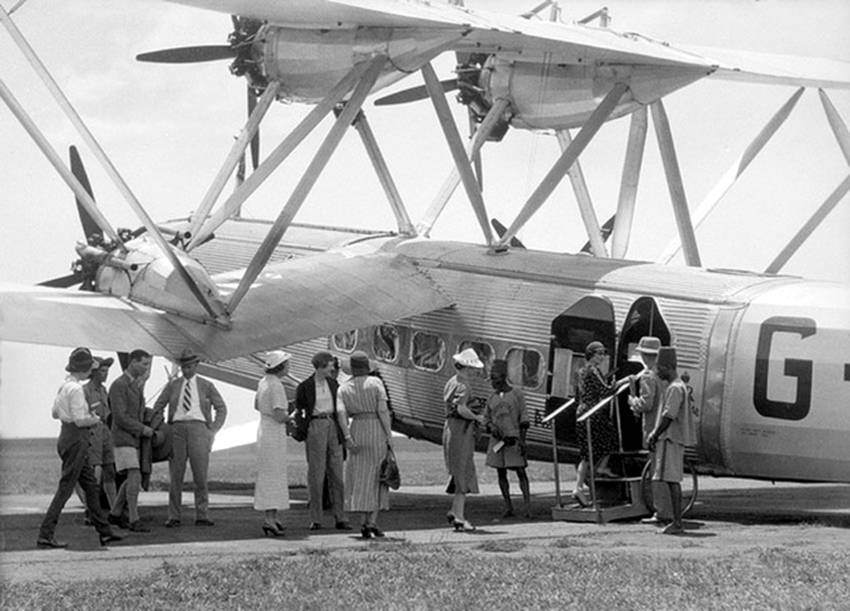 |
| In Khartoum, Sudan, boarding for the flight south. |
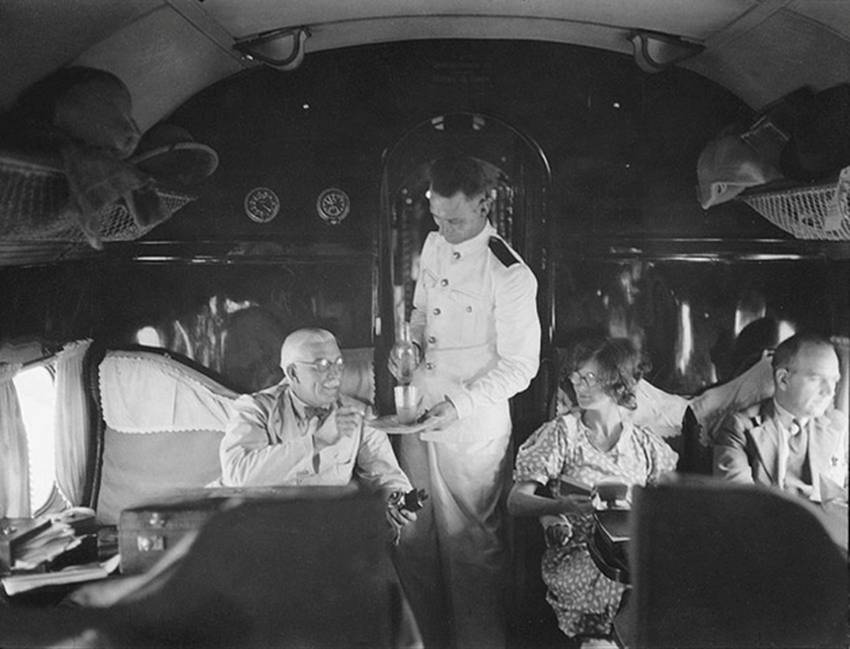 |
| There was only one class: First Class. |
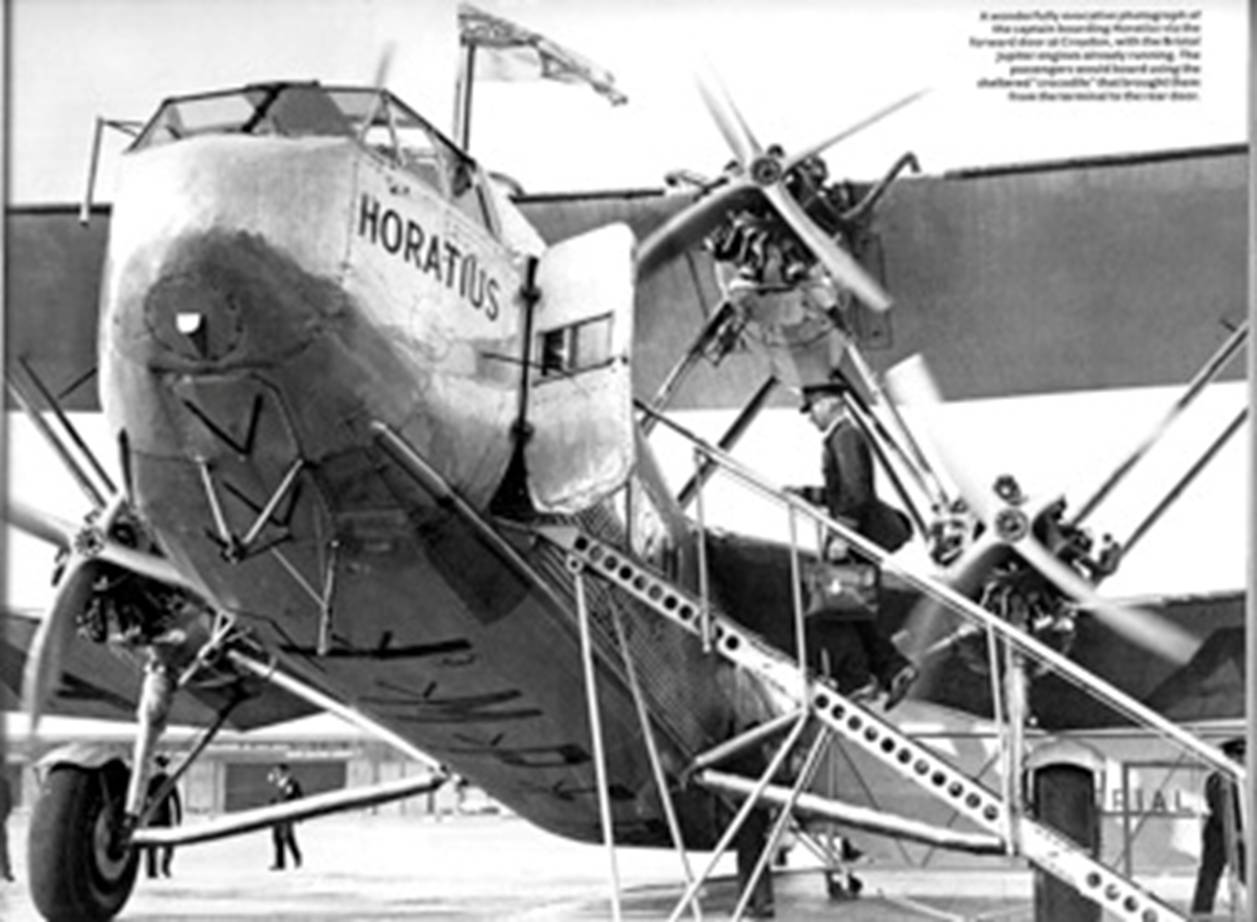 |
| British Imperial Airways Handley Page H.P.45 G-AAXD "Horatius". |
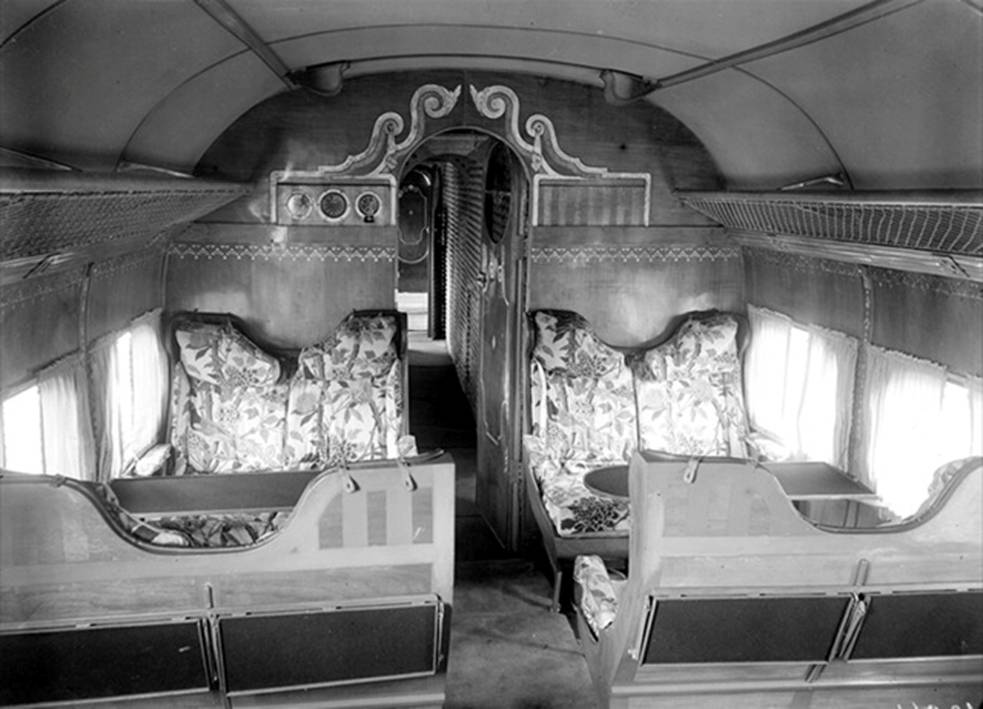 |
| The cabin of a Handley Page H.P.42/45 in 1931. |
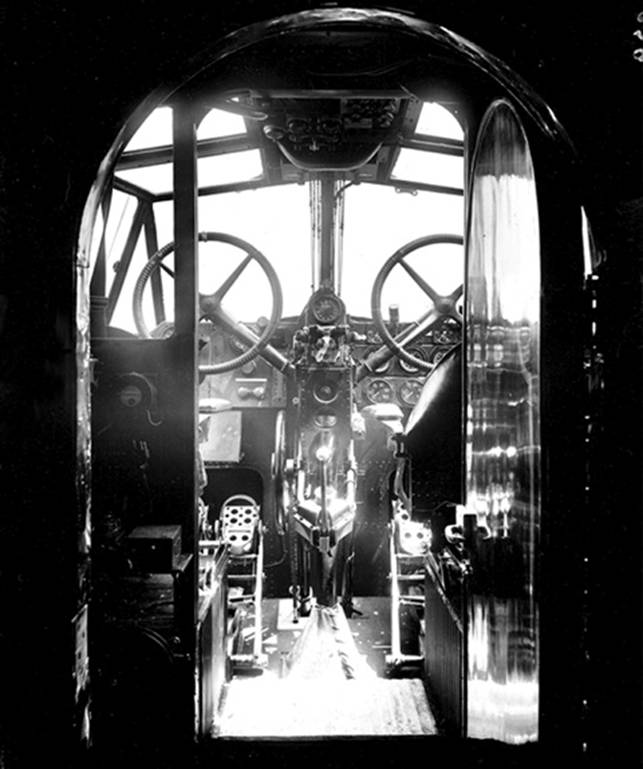 |
| The cockpit of a Handley Page H.P.42/45 in London, 1931. |
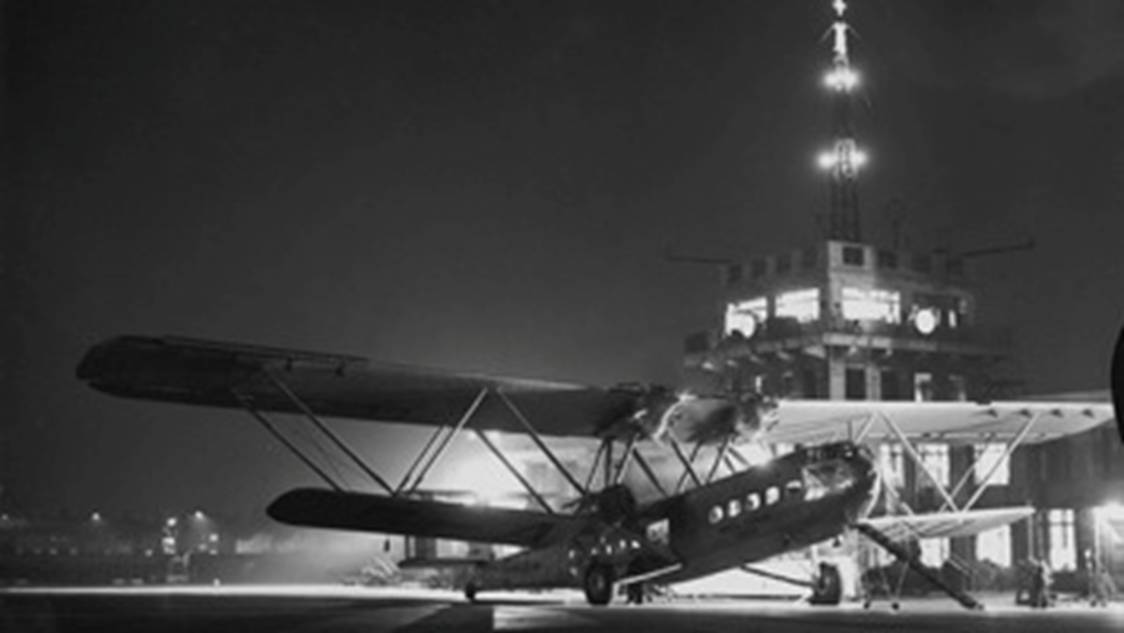 |
| An H.P.42/45 airliner ready for a night flight from London's Croydon aerodrome, 1931. |
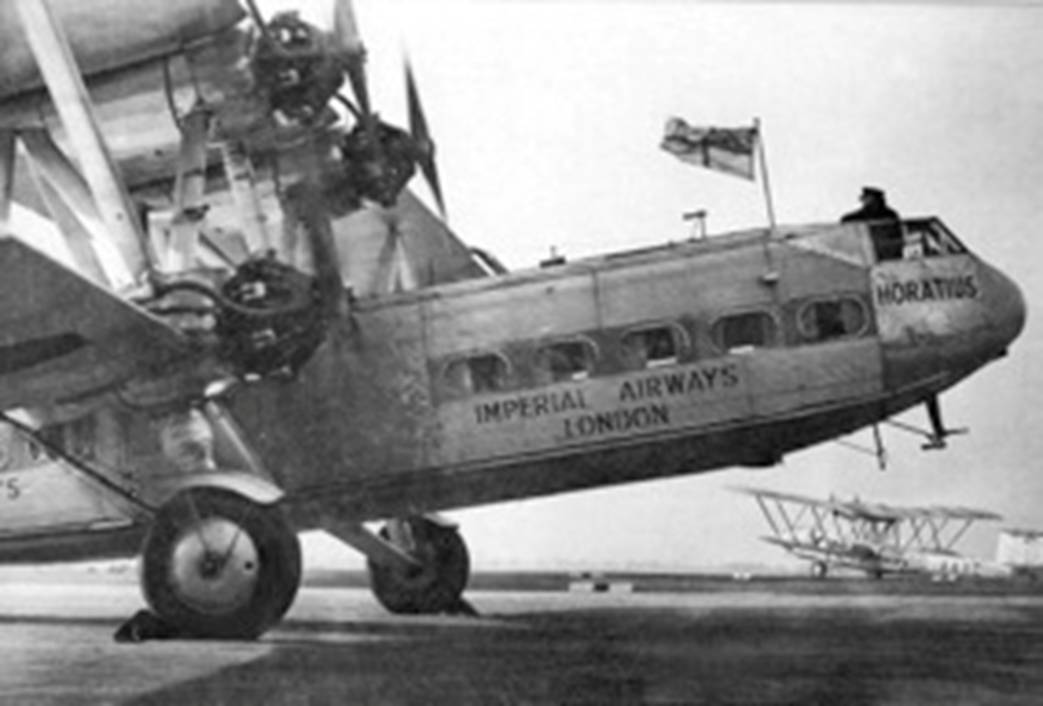 |
| Imperial Airways H.P.45 G-AAXD "Horatius" at London's Croydon aerodrome. |
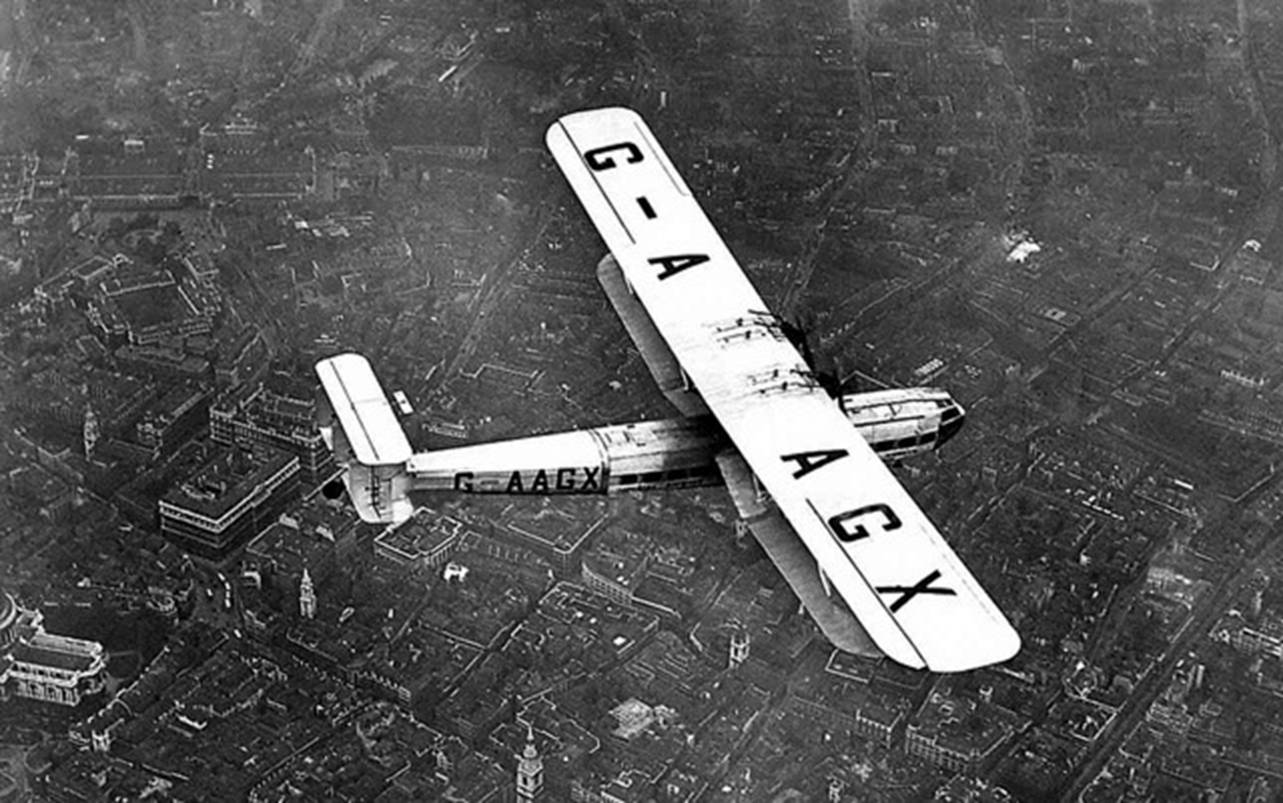 |
| Handley Page H.P.42 G-AAGX "Hannibal" of British Imperial Airways. |
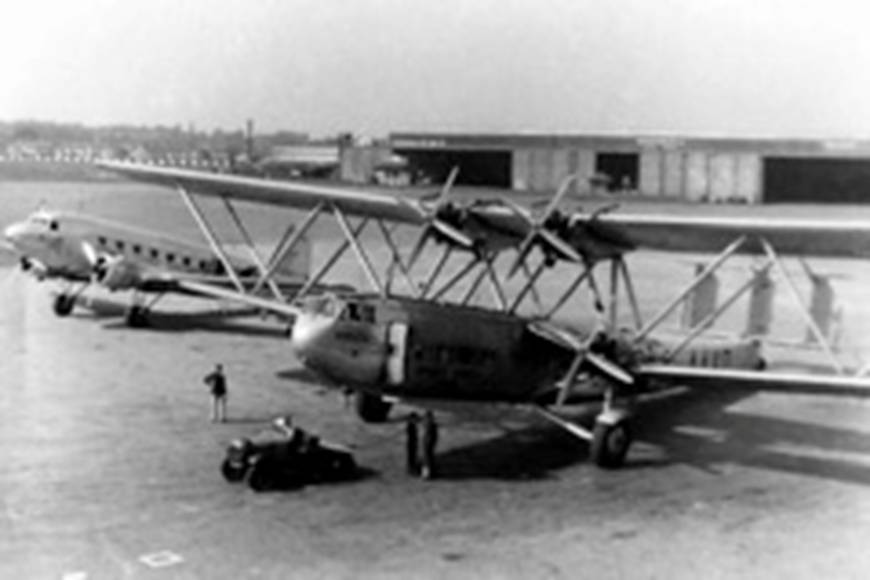 |
| A KLM DC-2 and an Imperial Airways H.P.45 G-AAXD "Horatius" at London's Croydon aerodrome in 1933. |
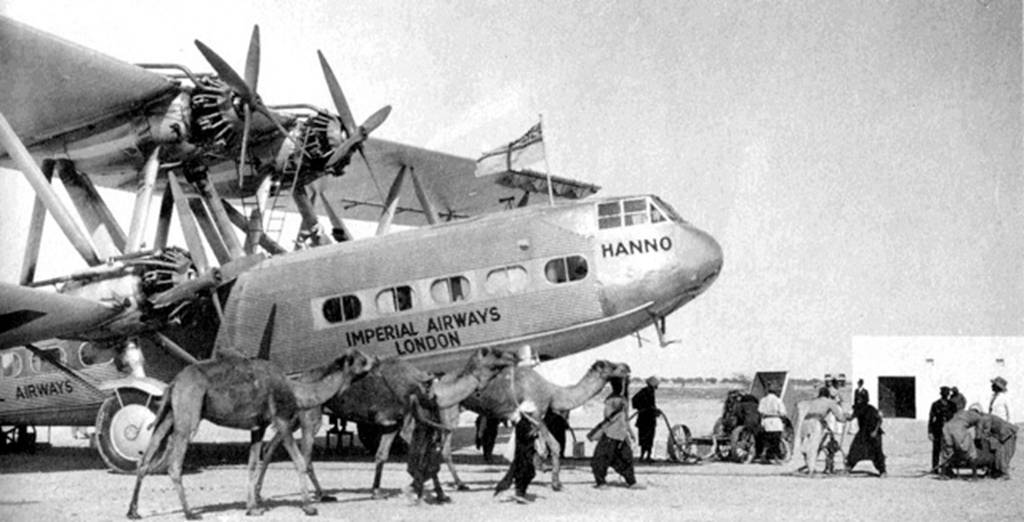 |
| Imperial Airways H.P.42 G-AAUD "Hanno" at Cairo in 1932. |
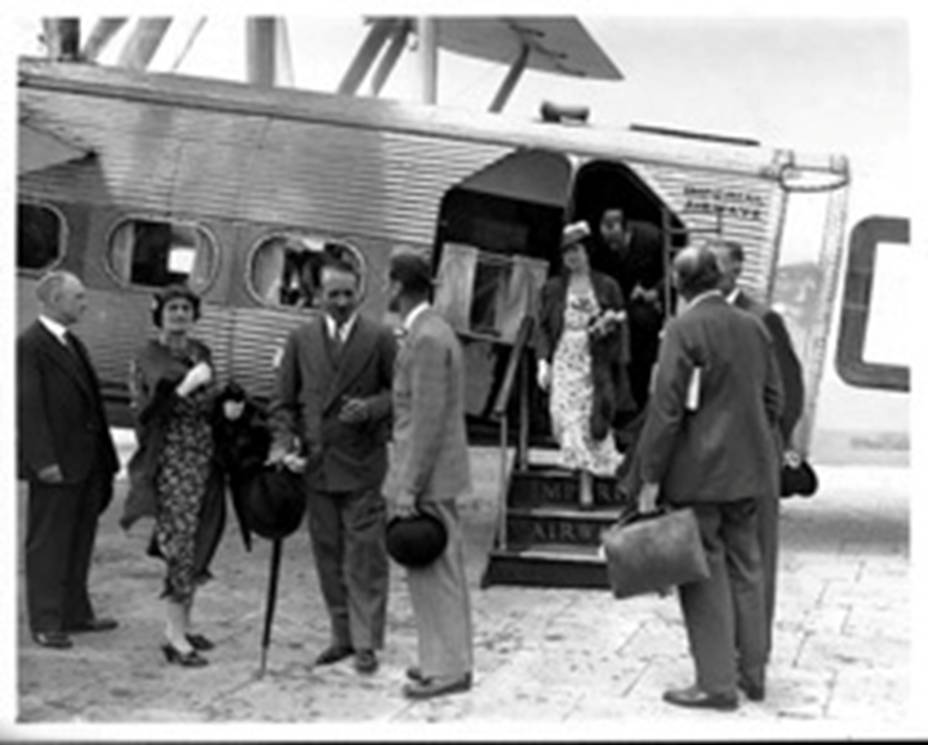 |
| An H.P.42/45 at Royal Air Force (RAF) Hendon Airport, London, 1937. |
The Handley Page H.P.42 and H.P.45 were British four-engine biplane airliners designed to a 1928 Imperial Airways specification by Handley Page of Radlett in Hertfordshire. Four of each model were built.
The H.P.42/45 were the land-based airliners of British Imperial Airways. Later, the airline used flying boats. Eight were built, four of each type. All were named beginning with the letter "H". Six were pressed into Royal Air Force service at the outbreak of the Second World War. No lives were lost in civilian service (a record thought to be unique for contemporary aircraft), but by 1940, all planes had been destroyed.
DESIGN AND DEVELOPMENT
The H.P.42 was designed for the long-range Eastern routes and the similar H.P.45 was built for the European routes. Imperial Airways called the H.P.42 the H.P.42E (E for "Eastern" routes - India and South Africa), while the H.P.45 was the H.P.42W (W for "Western" i.e. European routes). The H.P.42 and H.P.45 designations were Handley Page's identifiers but the identification "H.P.45" was not commonly used during the flying lives of the aircraft.
The H.P.42/45 was a large unequal-span biplane, all-metal except for the fabric coverings of the wings, tail surfaces and rear fuselage. The wings were braced by a Warren truss. The tailplane was biplane with three fins.
The H.P.42 had four Bristol Jupiter XIFs of 490 hp (370 kW) each while the H.P.45 used four Jupiter XFBM supercharged engines of 555 hp (414 kW). Both had two engines on the upper wing and one on each side of the fuselage on the lower wing.
The crew compartment was enclosed, a new development at the time, and there were two passenger cabins, one forward and one aft of the wings. The H.P.42E carried six (later 12) in the forward compartment and twelve in the after compartment. There was substantial baggage room. The H.P.42W seated 18 forward and 20 aft, with reduced baggage capacity.
OPERATIONAL HISTORY
The first flight was on 14 November 1930, by G-AAGX later to be named Hannibal, with Squadron Leader Thomas Harold England at the controls. The certificate of airworthiness was granted in May 1931, permitting commercial service. The first flight with paying passengers was to Paris on 11 June of that year.
Imperial Airways wanted its airliners to land safely at low speed, which meant a large wing area (almost as much as a Boeing 767 that weighs more than 10 times more). In 1951 Peter Masefield wrote, "The trouble about a slow aeroplane with a really low wing loading is the way it insists on wallowing about in turbulent air ... One of the reasons that seven times as many people fly to Paris to-day, compared with 1931, is that the incidence of airsickness in modern aircraft is only one-hundredth of that in the pre-War types." Another writer remembered "I had quite often been landed in a '42' at Lympne [France] to take on sufficient fuel to complete the flight from Paris to London against a headwind. 90 mph was its normal cruising speed." When the H.P.42s were finally withdrawn from civil service on 1 September 1939 they had recorded almost a decade without any major accidents.
INDIVIDUAL AIRCRAFT HISTORIES
Four H.P.42 and four H.P.45 aircraft were delivered, two HP45s being later converted to HP42s.
H.P.42
The H.P.42 was intended for the Africa and India services. They were based in Cairo.
G-AAGX Hannibal
The first flight of the prototype, Hannibal, was on 14 November 1930. The aircraft was named after Hannibal Barca, the Carthaginian military commander. On 8 August 1931 the aircraft was operating a scheduled passenger flight from Croydon to Paris when the port lower engine failed. Flying debris from the failed engine struck the propeller of the port upper engine causing it to vibrate so severely that it had to be shut down.
A forced landing was made at Five Oak Green, Kent where the aircraft suffered further damage to a wing and another propeller, and the tail was ripped off against a tree stump. There were no injuries amongst the 20 passengers and crew. The aircraft was dismantled and taken to Croydon by road for rebuild.
It was lost over the Gulf of Oman while in Royal Air Force (RAF) military service on 1 March 1940 with eight aboard including the First World War ace Group Captain Harold Whistler and the Indian politician Sir A. T. Pannirselvam. An early report that wreckage of the aircraft had been located turned out to be incorrect. No trace of the aircraft, the air mail it carried, or its occupants has ever been discovered, and the cause of its loss remains unknown.
G-AAUC Horsa
G-AAUC was originally named Hecate after the Greek goddess, but it was soon renamed Horsa, after the legendary conqueror of Britain and brother of Hengist. The aircraft first flew on 11 September 1931. It was impressed into No. 271 Squadron RAF as AS981. The aircraft burned after a forced landing on uneven ground at Moresby Parks, near Whitehaven, Cumberland, England, on 7 August 1940.
G-AAUD Hanno
G-AAUD, production number 42/3, was named after the Carthaginian explorer Hanno the Navigator, who explored the Atlantic coast of Africa in approximately 570 BC. Hanno first flew on 19 July 1931 and was later converted to a H.P.42(W) (Hannibal class). The aircraft was impressed into No. 271 Squadron RAF and was destroyed in a gale at Whitchurch Airport, Bristol, England, when it was blown together with Heracles and damaged beyond repair on 19 March 1940.
G-AAUE Hadrian
G-AAUE, production number 42/2, was named after the Roman emperor Hadrian. Hadrian's first flight was on 24 June 1931. On the outbreak of the Second World War, Hadrian was impressed into No. 261 Squadron RAF as AS982, at RAF Odiham. On 6 December 1940, Hadrian was torn loose from its moorings at Doncaster Airport in a gale, cartwheeled, and ended up inverted on a railway track next to the airport. The aircraft was too badly damaged to be worth repairing.
H.P.45
The H.P.45 carried more passengers with a reduced range and baggage capacity, and was intended for Imperial Airways' shorter European routes.
G-AAXC Heracles
G-AAXC was named after Heracles, also known as Hercules, who was the son of Zeus and Alcmene in Greek mythology and was noted for his extraordinary strength. Heracles first flew on 8 August 1931 and was impressed into service with the RAF on 3 March 1940. The aircraft was destroyed in a gale on 19 March 1940 at Whitchurch Airport, Bristol, England, when it was blown together with Hanno and damaged beyond repair.
G-AAXD Horatius
G-AAXD was named after Horatius, a legendary Roman hero. Horatius first flew on 6 November 1931. On 9 December 1937, Horatius was struck by lightning while flying across the Channel from Paris to Croydon. A precautionary landing was made at Lympne where it was found that minor damage had been done to a wing. In September 1938, Horatius suffered damage to its port undercarriage and lower port wing in a forced landing at Lympne. The aircraft was repaired and returned to service.
It was impressed into RAF service in the Second World War. Returning from France on a transport mission on 7 November 1939, the aircraft could not find its destination of Exeter due to bad weather and was forced to make an emergency landing at Tiverton Golf Course during which it hit two trees and was destroyed. A four-bladed wooden propeller from the aircraft was salvaged and is now on display at the Croydon Airport Visitor Centre, situated in the former terminal building of Croydon Airport.
G-AAXE Hengist
G-AAXE was originally named Hesperides, but was soon renamed after Hengist, brother of Horsa and legendary conqueror of Britain. Hengist first flew on 8 December 1931. It was later converted from a European to an Eastern aircraft. Hengist was caught in an airship hangar fire and burned at Karachi, India on 31 May 1937, making it the only H.P.42/45 not to survive until the Second World War.
G-AAXF Helena
G-AAXF was named after Helena, also known as Helen of Troy. It first flew on 30 December 1931. Like Hengist, it was converted to an Eastern aircraft. Helena was impressed into service with No. 271 Squadron RAF in May 1940. After a hard landing the aircraft was grounded later that year. Post-accident inspection condemned the airframe due to corrosion, and it was scrapped in 1941, except for the front fuselage section which was used as an office by the Royal Navy for several years.
| H.P.42/45 AIRCRAFT REASSIGNED TO THE RAF | |||
|---|---|---|---|
| MODEL | TAIL ID | NAME | ASSIGNED TO RAF SQUADRON |
| H.P.42 | G-AAGX | Hannibal | |
| H.P.42 | G-AAUD | Hanno | 271 |
| H.P.42 | G-AAUE | Hadrian | 261 |
| H.P.45 | G-AAXC | Heracles | |
| H.P.45 | G-AAXD | Horatius | |
| H.P.45 | G-AAXF | Helena | 271 |
NOTABLE APPEARANCES IN MEDIA
G-AAUD Hanno starred in the 1937 short film, Air Outpost - 24 Hours at the City and Airport of Sharjah in the Persian Gulf.
G-AAXD Horatius can be seen in the 1937 film Stolen Holiday with Kay Francis and Claude Rains. Midway through the film, they fly from London to Geneva on G-AAXD, a series of images shows the aircraft taking off and landing, with the registration clearly visible.
A fictitious aircraft, G-AAXJ Horus, stars in the fifth album of Belgian Yoko Tsuno series, Message pour l'eternite.
An unidentified H.P.42 is clearly seen in the opening credits of the Hayao Miyazaki animated film Kiki's Delivery Service. The H.P.42 features in Roy Lockwood's 1934 short documentary film Airport (a "day-in-the-life" of London's Croydon Airport).
An H.P.42 also appears in the Graphic Novel Biggles: Deadly Snow, which takes place in 1951. The markings on the plane are G-AAXF, which would correspond to the Helena, although the story happens 10 years after the particular plane stopped flying.
Heracles-class biplanes (and the luxurious, purpose-built Croydon Airport of the day) are also described by Alexander Frater when revisiting the first leg of the long and adventurous, early 1930s Imperial Airways England-to-Australia route, in the book Beyond the Blue Horizon.
OPERATORS
- United Kingdom Imperial Airways
- Royal Air Force No. 271 Squadron RAF
- Royal Air Force No. 261 Squadron RAF
SPECIFICATIONS (H.P.42E)
| GENERAL CHARACTERISTICS | |
|---|---|
| CHARACTERISTIC | VALUE |
| Crew | 4 |
| Capacity | 24 passengers |
| Length | 92 ft 2 in (28.09 m) |
| Wingspan | 130 ft (39.62 m) |
| Height | 27 ft (8.23 m) |
| Wing area | 2,989 sq ft (278 square meters) |
| Airfoil | RAF 28 |
| Empty weight | 17,740 lb (8,047 kg) |
| Max. takeoff weight | 28,000 lb (12,700 kg) |
| Powerplant | 4 Bristol Jupiter XIF 9-cylinder radial engines, 490 hp (365 kW), each |
| PERFORMANCE | |
|---|---|
| CHARACTERISTIC | VALUE |
| Maximum speed | 120 mph (104 knots, 193 km/h) |
| Cruise speed | 100 mph (87 knots, 161 km/h) |
| Range | 500 mi (435 nmi, 805 km) |
| Rate of climb | 790 ft/min (4 m/s) |
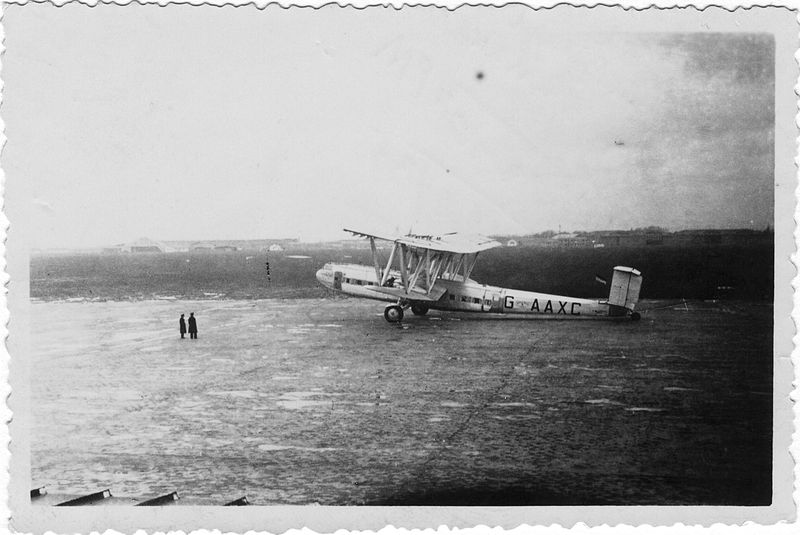 |
| Handley Page H.P.45 G-AAXC "Heracles" at Bourget, France, April 1935. |
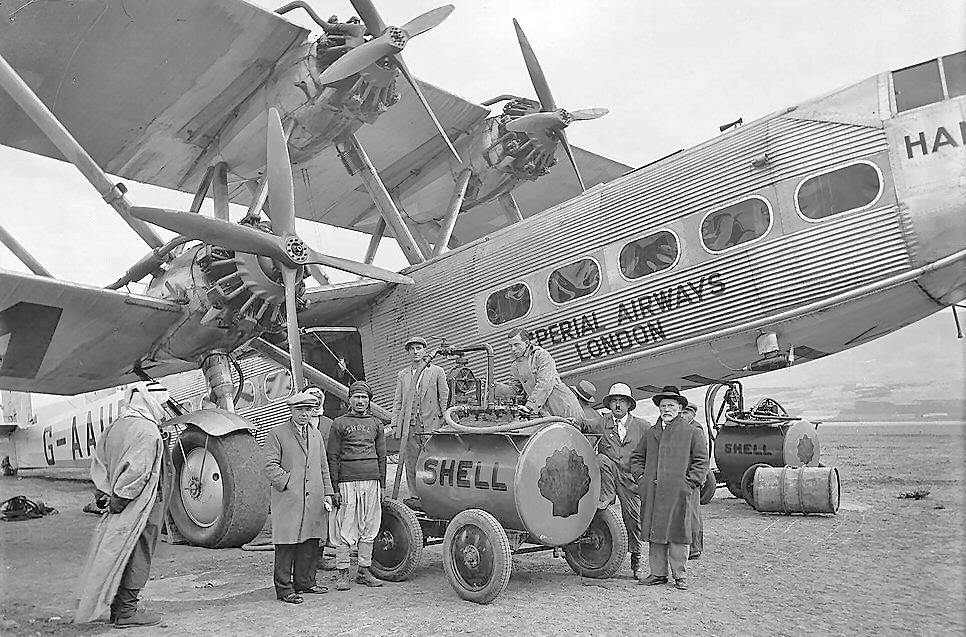 |
| Handley Page H.P.42 G-AAUD "Hanno" of Imperial Airways. |
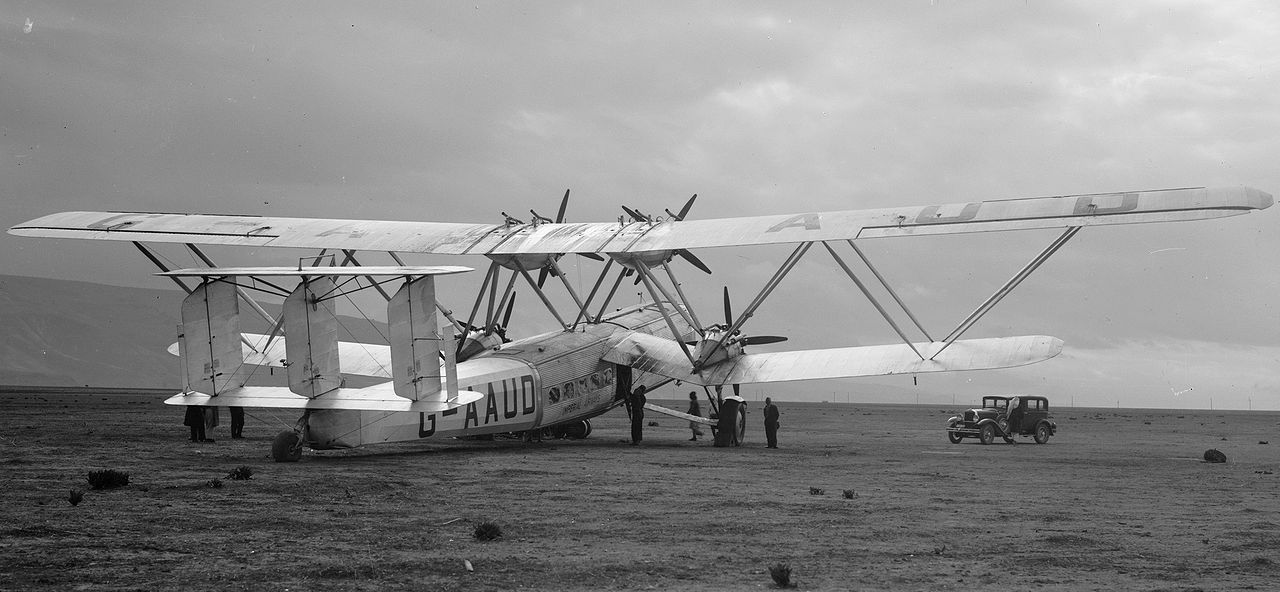 |
| The Handley Page H.P.42 G-AAUD "Hanno" of Imperial Airways. |
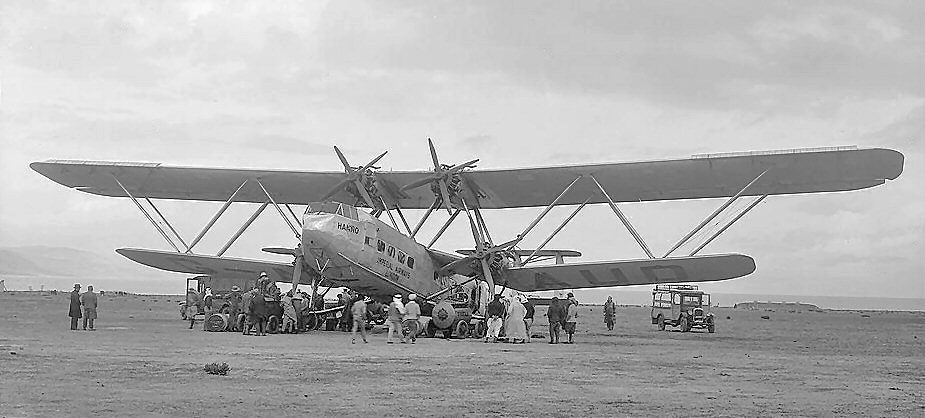 |
| The Handley Page H.P.42 G-AAUD "Hanno" of Imperial Airways. |